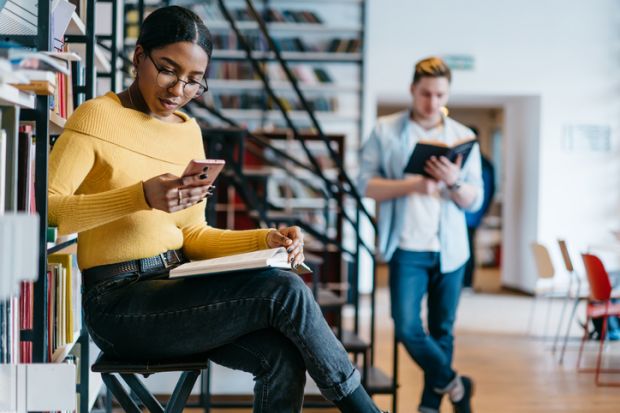One of the first things I ask a class when I’m teaching them about social media in the creative industries is “who here is on social media?” Everyone raises their hand. I then ask: “Who here is on social media right now?” They look around sheepishly; most hands stay raised.
The value of this experiment is in showing we are all connected, all the time. This is especially true in the 18- to 25-year-old demographic. We Are Social’s Global Digital Snapshot of July 2023 indicated that we are spending an average of two hours and 26 minutes on social media every day, so it’s bound to seep into a university student’s academic life.
We shouldn’t assume that the digital divide doesn’t exist among Gen Z students. Not everyone has the same equality of access to the tech, the ability or time to use it, or the know-how to use it well. And if all our students are on social media, we need to keep in mind how that affects those that might not be able to participate as fully because they have part-time jobs or have to commute, for instance.
There is research around the use of social media in the classroom as a tool – mostly around platforms owned by Meta and X (previously Twitter). But what studies like these are missing is how the use of social media within a classroom, but not as part of the class, affects a student. With this in mind, I conducted a study of our undergraduates and postgraduates in media, journalism and publishing (all female, 69 per cent postgraduate, all under 30) to dive into what they were using in and around the university classroom and how.
It found that all students used WhatsApp and Instagram, while two-thirds also used TikTok, Facebook and Snapchat. A full 82 per cent of students said they used social media during class. They did this to chat both with classmates and those not in the class but who were part of their cohort. Of the students who used social media during class, 40 per cent engaged with content – scrolling Instagram, liking posts, sharing and commenting – though 20 per cent indicated they were taking group notes for their friends to access later. Overwhelmingly, the conversation topic, both during and after class, was assignments, and they sometimes asked each other to clarify a point made by the lecturer.
This use of social media to support learning sounds positive. Social media can connect groups and provide kinship in a way that supports and uplifts students. But it isn’t all rosy. It also has some negative consequences. First, it imposes obligations. Almost two-thirds of students feel obligated to answer questions about a class when asked on social. There is a sense of treating others the way they themselves want to be treated; they might one day need help too. But sometimes it would make more sense for the person in doubt to direct their question to the lecturer or consult the syllabus.
Moreover, students’ sense of obligation is emotional labour, which is gendered. Female-identifying students are more likely to answer questions from their cohort. In a typical mixed-gendered cohort, this could lead to female students always answering, while male students ask the questions but answer many fewer.
This can be frustrating. Over half of the students in my study said they got fed up with other students always asking questions, especially when they believed that most of the questions came from those who didn’t turn up to class or read the written guidelines for an assignment. The frustration that students feel manifests in two ways: for those they feel are just lazy, but they are also frustrated by those who ask questions that have already been answered. Sometimes this frustration causes students to tune out of group chats and social spaces just to be able to focus on their own work. This can be problematic for the student if they miss extra information or no longer feel able to ask their own questions should the need arise, which can give rise to anxiety and enhance feelings of loneliness and isolation.
As academics, we need to be more cognisant of how students are using social media in and around our classrooms. We don’t need to be involved in it directly, but we should be aware of how cohorts are structured and work within that to enable students to better distribute their emotional labour while fostering community and dialogue in the classroom. This can help to head off frustration that affects their mental health and ability to learn.
Miriam J. Johnson is a senior lecturer in publishing at Oxford Brookes University.



